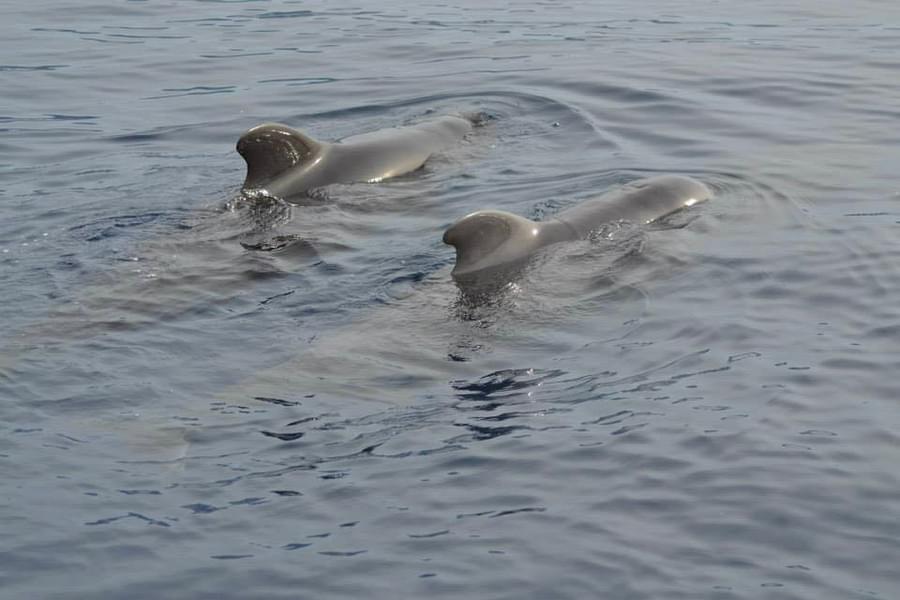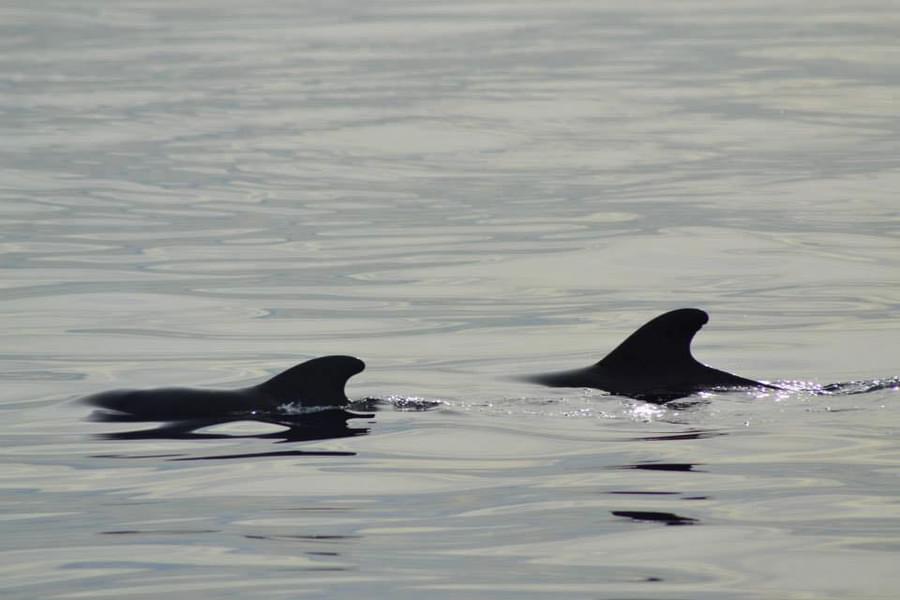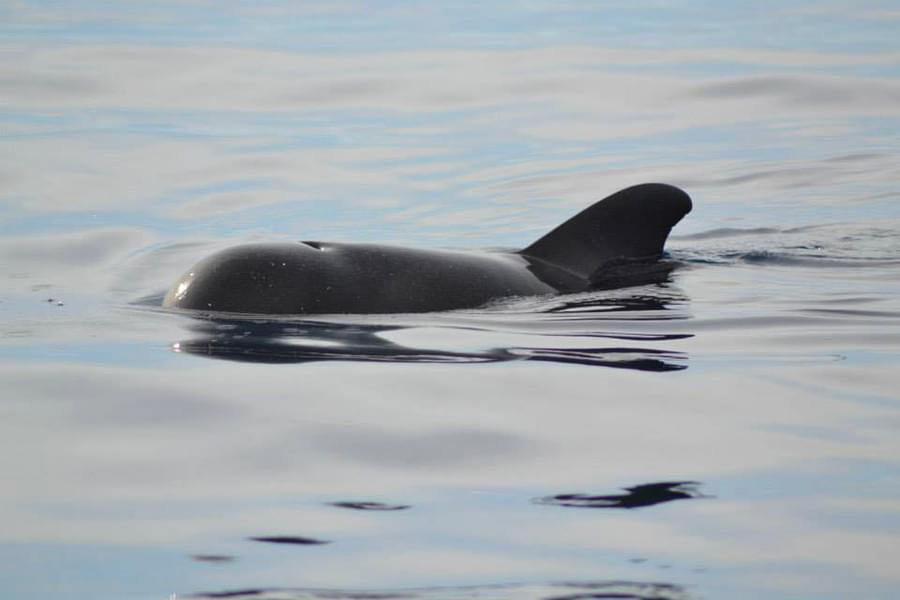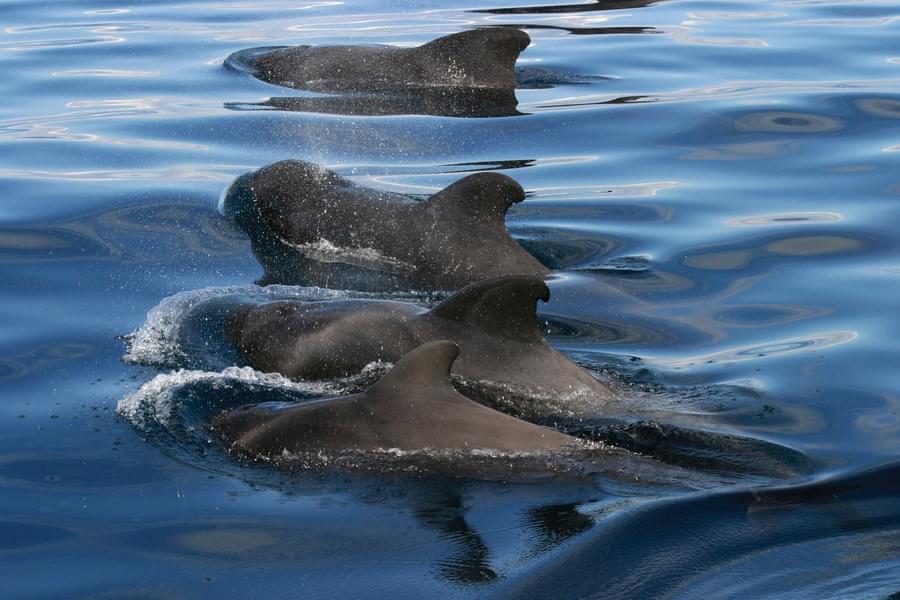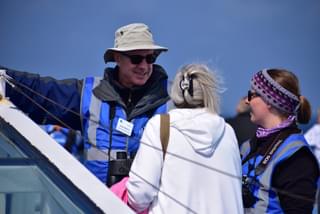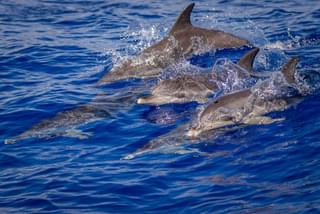Long-finned pilot whale
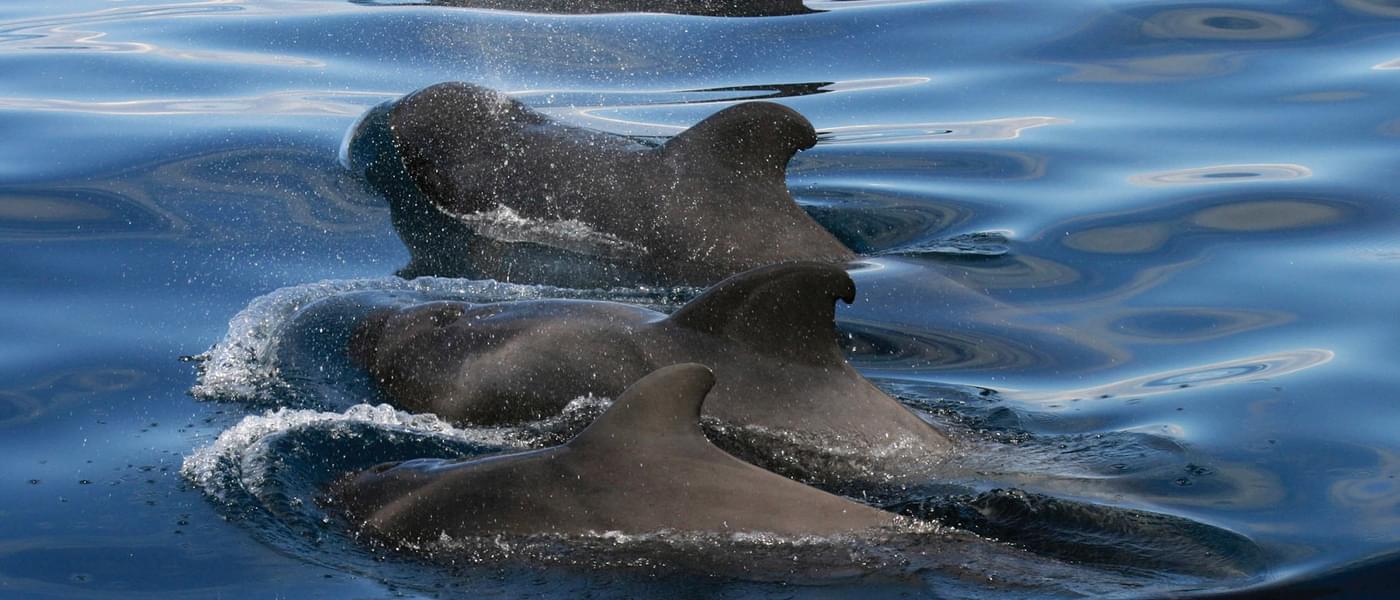
Globicephala melas
3.8 - 7.5m
Black
Teeth
Dorsal fin
Long-finned pilot whales are, in fact, dolphins, not whales. They have a rounded bulbous head and a broad-based dorsal fin that looks like a witch’s nose or a smurfs hat. Males have a larger, broader -based dorsal fin than females. They are glossy black in colour with a grey saddle patch behind the dorsal fin and with a white underbelly. Occasionally pilot whales like to spyhop (where they pop their heads out of the water to have a look around) and when they do this, it is evident to see a white anchor shape on their chests. There are two species of pilot whale found in the northern hemisphere, long-finned and short-finned when spotted in the ocean; they are very hard to tell apart unless their pectoral fins are seen; long-finned pilot whales have a more pronounced bend in their pectoral fins. When compared to short-finned pilot whales, long-finned pilot whales also have more teeth and a different skull shape (not visible in the field).
Key features:
- Bulbous melon, blunt beak and a pale blaze from eye
- Broad, rounded dorsal fin, forward of centre
- Often seen spy-hopping - lifting their head vertically out of the water
- Prominent, arched tailstock when surfacing
Behaviour
Pilot whales travel in family groups of 2 - 60 individuals, but larger groups are sighted in feeding grounds. They feed during the night, so their daytime behaviour is usually travelling leisurely and logging at the surface. They are playful and inquisitive, actively approaching ships and spy hopping, tail slapping and breaching. They associate with bottlenose dolphins, Risso’s dolphins and other cetaceans. When surfacing, the bulbous head and dorsal fin appear first. A slow roll of the back reveals the forward position of the dorsal fin, and the arched back shows a thick tailstock above the water.
Threats
Long-finned pilot whales are particularly susceptible to stranding due to the fact they have strong social bonds in their family groups. If an individual within the group becomes sick, injured or gets lost the rest of the pod will follow. Pilot whales have also known to get entangled in fishing nets, are susceptible to sonar and are hunted in the Faroe Islands.
Distribution
Around the world two distinct populations are recognised, one in the southern hemisphere and the other in the North Atlantic. Long-finned pilot whales prefer deep water but make seasonal inshore movements to hunt migrating prey such as cuttlefish, squid and fish. The range of the long-finned pilot whale does overlap with the short-finned pilot whale so the pectoral fins must be seen to ensure identification is correct.
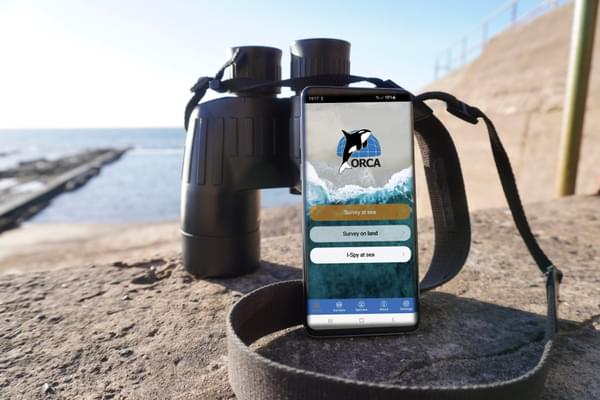
Study whales and dolphins as an ORCA OceanWatcher
The ORCA OceanWatchers online training course, along with a bespoke app, will enable everyone to collect data about whales, dolphins and porpoises. And it can be collected from anywhere that you can see the sea - whether that’s from your local beach, on holiday at the coast, scanning the seas from a cruise ship, travelling via ferry, or from your own boat.
You may also be interested in

